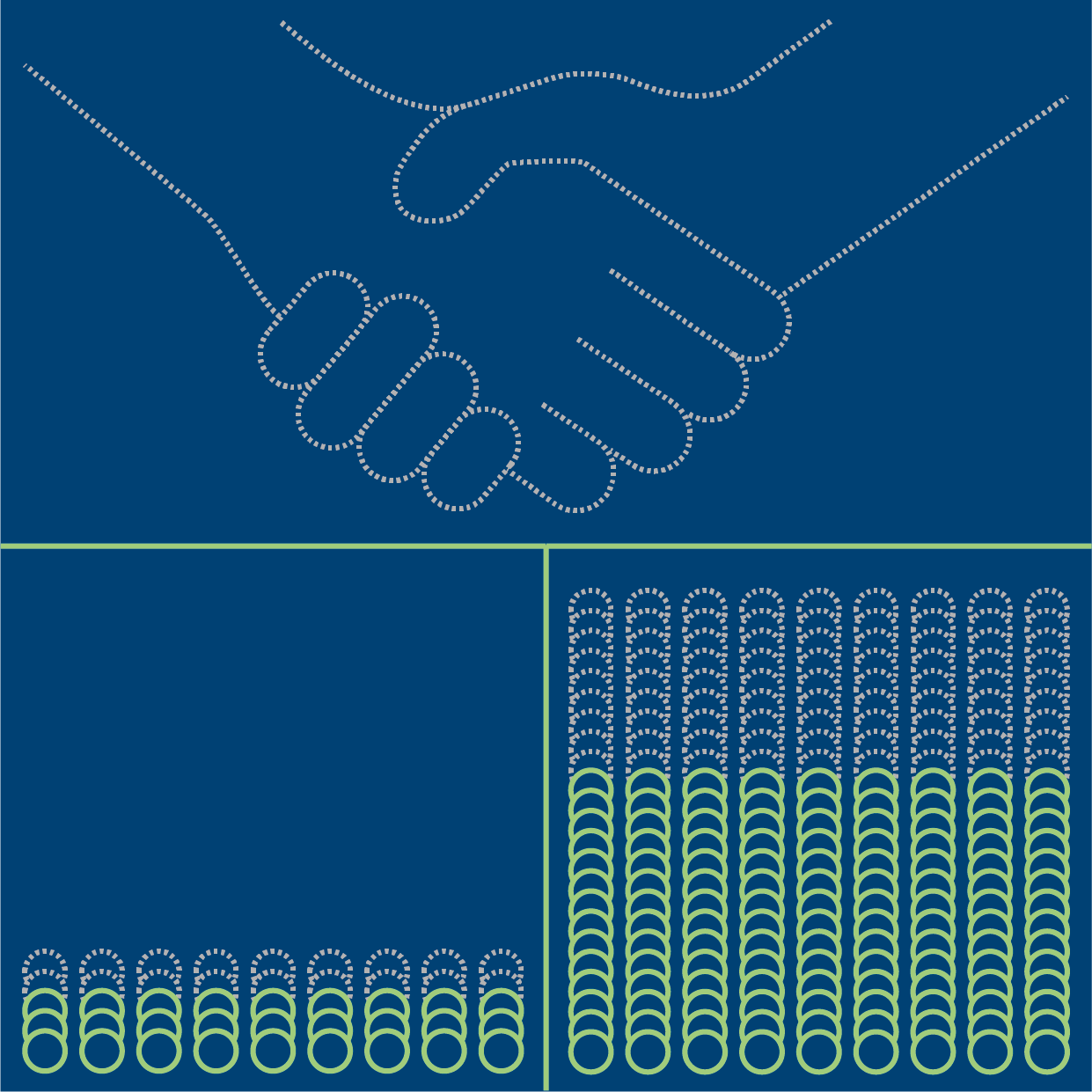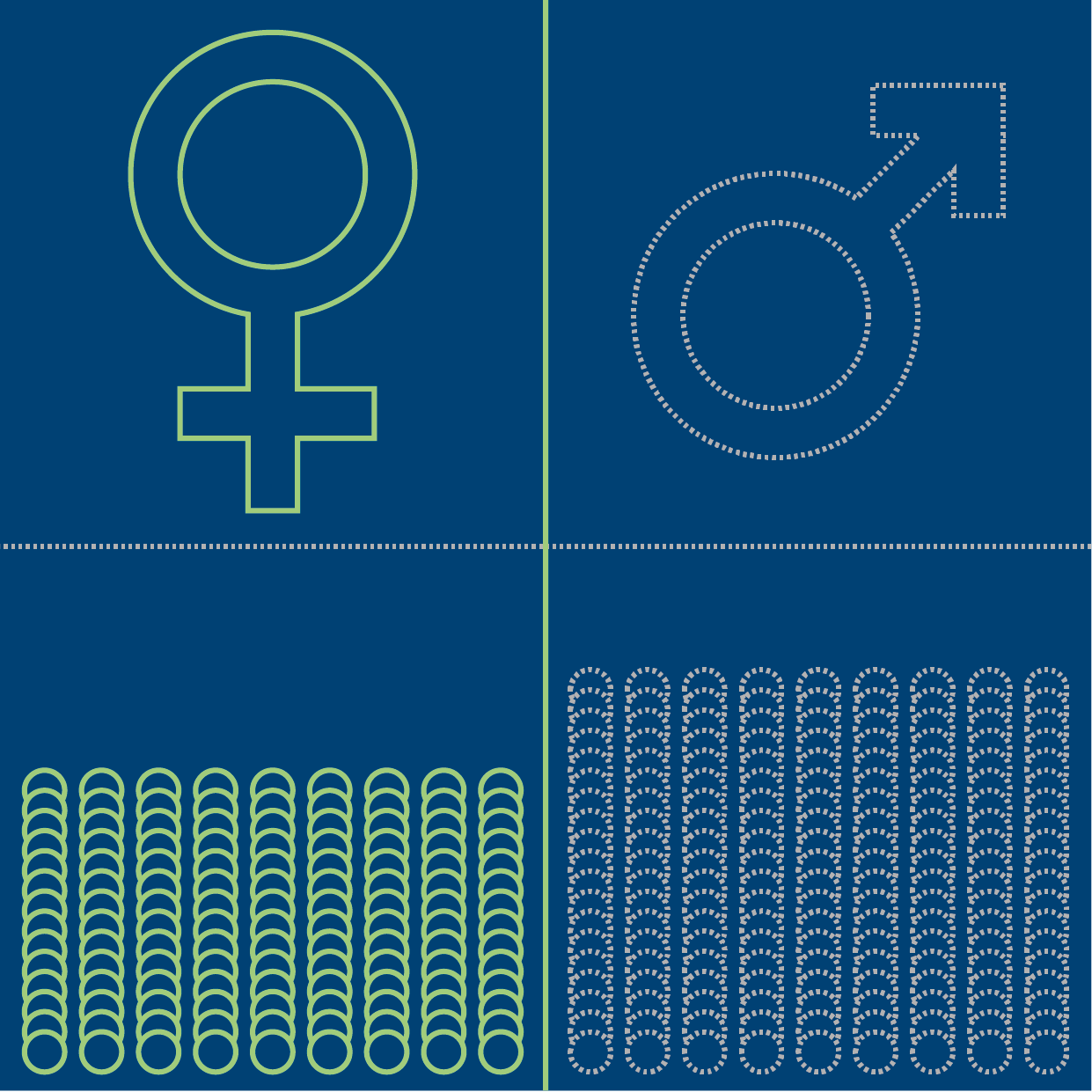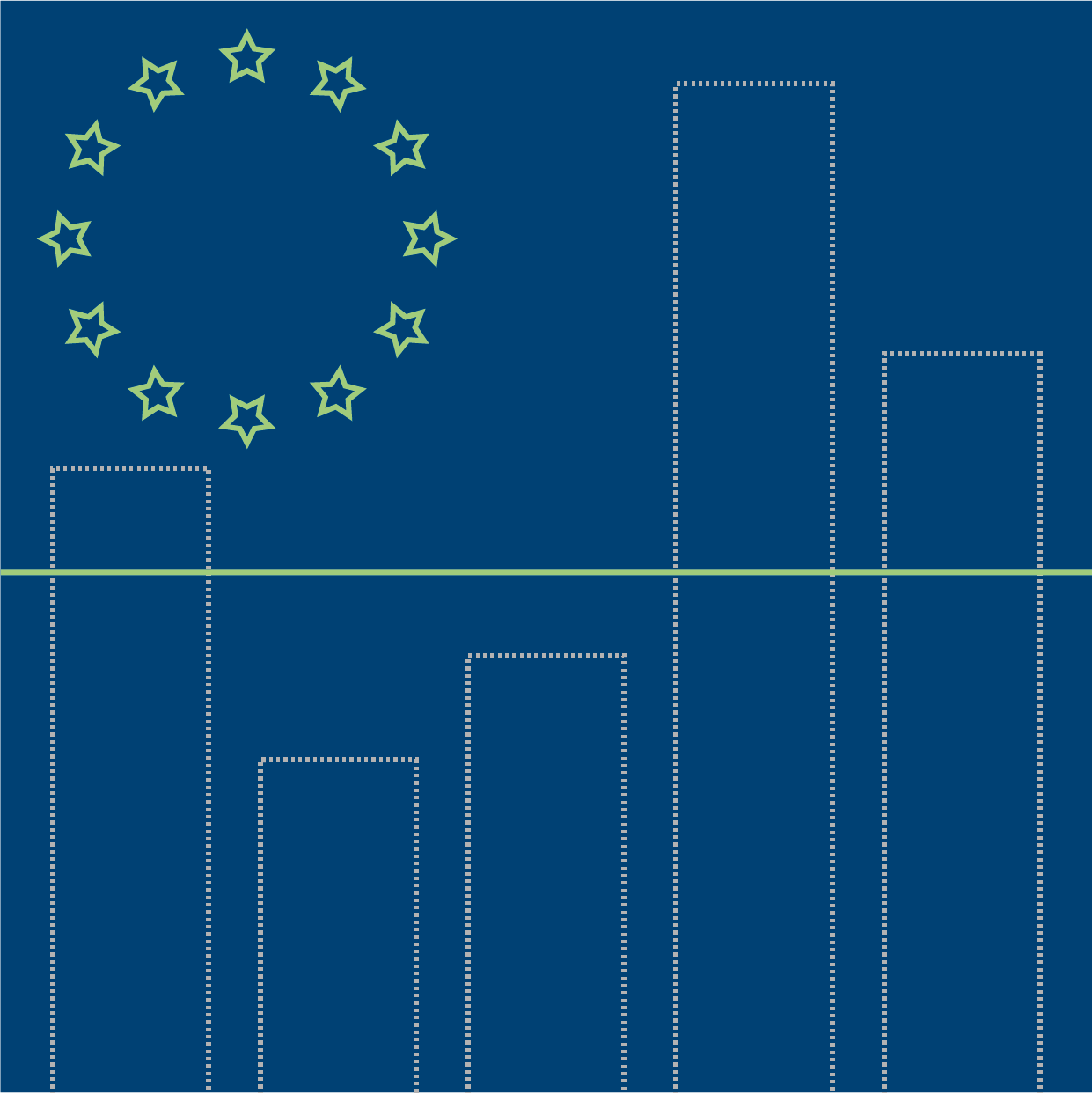Research-Highlights 2022
Table of contents
- How International Trade Impacts In-Country Inequality
- Processing Probabilities at Different Ages
- Benefits of Family Policy Interventions Limited
- Migration and Labor Market Integration in Europe. Towards an equilibrium?
- Spillover Effects of Enforced Prosocial Behavior
- A New Climate Policy Innovation Framework
How International Trade Impacts In-Country Inequality

International trade has many positive effects on economic development. But how does trade liberalization affect the distribution of a country’s income? To get an answer to this question is particularly difficult because it requires very detailed data.
New methodology using tax data
Dina Pomeranz and her team developed an innovative methodology to explore the effects using detailed anonymized data from the Ecuadorian tax authority. This includes data on all transactions between companies (based on VAT declarations) and the imports and exports of these companies (based on customs data). The researchers then linked this information with tax data on wages and firm ownership to understand who is involved in the production process and how.
Increased inequality in Ecuador
How trade affects income distribution depends on the composition of imports and exports. The results show that in Ecuador, international trade is currently increasing inequality. The study also shows the dynamics that lead to this result: Ecuadorian exports, especially commodities and raw materials such as oil, fruit, seafood and flowers, tend to benefit the middle class and the less affluent, while imports, e.g. machinery, chemicals, vehicles, tend to benefit the already affluent —and overall, imports have a greater effect.
Greater inequality does not automatically mean greater poverty
The study analyses relative income inequality. Higher inequality does not mean higher poverty. It is quite possible that trade has increased the income for Ecuadorians, but benefitted the better-off more than the poor and middle classes.
Can these results be transferred to other countries? "Transferability is limited", says Dina Pomeranz "as the effects depend on the specific mix of imports and exports. How trade affects the distribution is strongly related to which income strata are represented in which sectors. However, we can transfer the new methodology to measure distributional effects in other countries. "
The new methodology can be used to identify winners and losers from changes in international trade. This allows for targeted policies to help those disadvantaged by such changes.
Paper:
Imports, Exports, and Earnings InequalityRodrigo Adão, Paul Carrillo, Arnaud Costinot, Dave Donaldson and Dina Pomeranz
Quarterly Journal of Economics, 2022
Processing Probabilities at Different Ages

Every day we take dozens of decisions under uncertainty. Understanding how our brains process such decisions is central to understanding human behavior. Many researchers have tackled the topic, and yet much remains to be unpacked before we fully know how our brains process and weigh probability and magnitude information.
A recent paper co-authored by Prof. Todd A. Hare and Gaia Lombardi, a PhD student from the department, focuses on the differences in mechanistic processing between younger and older adults. To do this, participants are presented with a simple gamble in which they can win a given amount of money with a given probability. Based on previous studies the authors know that their participant’s brains process the attributes of the gamble in the following order: Probability of winning, reward size (magnitude) and accumulated previous wins.
Older people start processing the magnitude attribute later
They found that older people are more likely to accept gambles with a lower expected value. Todd Hare explains: “We saw that older people spent more time processing the probability information, before incorporating magnitude information, and we also found that there is more noise in their valuation”. More noise means that their choices show more variance which cannot be attributed to a specific factor. “These differences are not enormous but seem to explain the higher number of suboptimal choices made by older people. They are not less good at processing probability; they simply have more unexplained variance in their decisions.”
Highlighting probability information increases quality of decision-making
Highlighting the probability information increases its salience and led to fewer suboptimal choices, bringing the percentage of optimal choices made by older people up to the baseline level for younger people. Highlighting probability information seems to reduce the noise. In younger people too, highlighting increased the quality of their choices. The researchers found no age-related differences based on reward magnitude or accumulated previous rewards.
Paper:
Older adults process the probability of winning sooner but weigh it less during lottery decisions
Chen, Hsiang-Yu., Lombardi, Gaia., Li, Shu-Chen. Hare, Todd A.
Nature Sci Rep 12, 11381 (2022)
Benefits of Family Policy Interventions Limited

The introduction of maternity leave and the expansion of external childcare are considered key achievements of the last decades. Women are more likely to return to the labor market after the birth of their children and the child penalty - the loss of income due to the birth of a child, is decreasing. Or so we thought.
However, longer maternity leave, more crèches or guaranteed jobs to return back to do not reduce the child penalty, as a recent paper by Josef Zweimüller and co-authors shows.
The researchers used a data set to analyze the effects of individual measures in a quasi-experimental setting. In 1961, Austria introduced 52 weeks of paid maternity leave, including a job guarantee. This was followed by four major reforms. Today, parents can take parental leave up to 36 months. At the same time, the number of external childcare places for pre-school children was also increased.
Crèche places substitute other forms of care
Contrary to popular belief, the expansion of external childcare facilities had no effect on the Child Penalty. "More crèche places do not contribute to reducing the child penalty, they simply seem to substitute other forms of caretaking", Josef Zweimüller explains the findings.
The duration of parental leave however does have a short-term effect. Mothers take advantage of the opportunity to extend their maternity leave. However, this does not leave any traces on long-term labor market success. The conclusion of the study: The important instruments of family policy — parental leave and public childcare — have no lasting effect on the careers of mothers. This also means that existing gender inequalities in the labor market cannot be eliminated with family policies.
Paper:
Do Family Policies Reduce Gender Inequality? Evidence from 60 Years of Policy Experimentation
Henrik Kleven, Camille Landais, Johanna Posch, Andreas Steinhauer, Josef Zweimüller
NBER Working Paper, 2020
Migration and Labor Market Integration in Europe. Towards an equilibrium?

The European Single Market allows its citizens to choose in which country they want to work. This freedom of movement should lead to a convergence of wages and employment rates across countries. However, despite increasing migration flows within Europe, a full equilibration of wage levels is not in sight.
The Treaty of Rome, which was signed by West Germany, France, Italy and the Benelux countries in 1957, envisioned the creation of a common market with free movement of goods, capital, services, and persons. Today, legal barriers to migration have been dismantled within a European labor market that comprises more than 460 million individuals across 31 countries. Migration within the continent increased substantially following the European Union’s eastern enlargement, as many citizens of the new member states moved to Western Europe.
In principle, labor market integration could eventually lead to an equilibration of wages across countries. To examine convergence in the European Market, the paper compares the evolution of real wages across countries between 2008 and 2018. While wages in poorer countries such as Romania and Poland increased relative to the German benchmark, wages in richer nations such as Denmark or the Netherlands grew more slowly. As a result, the wage dispersion across European countries declined by a third during this decade, yet sizable wage differences persist. The ability to migrate is particularly valuable for the citizens of Europe’s poorer countries. For instance, the number of Bulgarian workers in other EU countries corresponds to 8 percent of Bulgaria’s domestic population, and the paper computes that their wage gain from migration is as high as 6% of Bulgaria’s GDP.
There are however many persistent obstacles to migration that slow labor market integration in Europe. The EU has 24 different official languages, and a lack of proficiency with a host country’s language limits immigrants’ ability to find jobs while reducing their productivity in the workplace and inclusion in society. Occupational certificates from one country may not be recognized in another, despite ongoing efforts towards more harmonization. Moreover, there is evidence for discrimination against individuals with foreign nationalities, and skepticism about migration is present in many countries’ political debates. As a result of these factors, we are still far away from a fully integrated European labor market.
Paper:
Migration and Labor Market Integration in Europe
David Dorn, Josef Zweimüller
Journal of Economic Perspectives, 2021
Spillover Effects of Enforced Prosocial Behavior

While institutions play a significant role for long-term societal and economic development and prosperity, they do come with a price-tag. It would be inefficient to regulate every realm of public and economic life. And it probably isn’t necessary either: There are spill-over effects from institutional to non-institutional contexts as behavioral research from the Department of Economics finds.
The laboratory experiment was an adaption of a public good game in which participants receive an initial endowment and can choose to contribute part (or all) of it to a public pot. This pot is doubled and distributed evenly among the group. The more the players contribute, the higher the payoff for everyone. However, every player risks that the others do not contribute. In this experiment, the game was repeated for 20 rounds.
Half the participants played two such games in parallel. The other half played one game according to this setting and one game including an institution that mandated that players contribute a fixed amount to the pot and penalized them if they failed to do so. This second setting allowed the researchers to study any spill-over effects from the institutional to the non-institutional context. Participants in the second group tended to also contribute more to the game without an institution than participants who played both games without an enforcing institution, and did so in subsequent, one-off public goods games that didn’t enforce cooperation.
These results show that institutions have spill over effects and can strengthen prosocial behavior in neighboring contexts. How far these neighboring contexts may reach remains to be understood. While institutions did increase prosocial behavior, they did not increase trust between participants.
A New Climate Policy Innovation Framework

Reducing global carbon emissions can seem like an uphill battle. Countries struggle to implement policies that do not lead to unintended consequences defying their original aims and economic interests. A change in our understanding of the effects of policies on technological innovation can help overcome this hurdle. The authors propose a green industrial policy that combines emission taxes, trade policy and subsidies.
Economists agree that technological innovation is endogenous and responds to policies and regulation. However, when it comes to climate change, the literature focuses on models in which technological change is exogenous and policies have no effect on the pace and path of innovation. Conclusions drawn from this exogeneity assumption have serious consequences. These are amplified as technological innovation is path dependent: decisions for a specific approach become self-perpetuating as it becomes harder to switch technology further down the line even if the chosen approach has obvious flaws.
Compared to local economic issues, global challenges have added layers of complexity. Mutual consent on appropriate global action in tackling climate change is hard to achieve and unilateral regulations, such as carbon taxes are often criticized for triggering a relocation of energy intensive production into unregulated markets.
Incorporating effects of climate policy into innovation growth models
David Hémous and co-authors create a new framework incorporating path dependency and the effect of public policies on innovation efforts. Assume an economy that produces one good. It can do this with fossil fuel or a clean energy. If fossil fuel energy is cheaper than clean energy, the economy will rely more on fossil fuels than on clean energy. Since the two inputs are substitutes, the fossil fuel sector will also earn higher revenues. This leads to innovation further improving the fossil fuel technology, e.g. better turbines for natural gas power plants. It also leads to less or nor innovation into clean energy, e.g. better blades for windmills.
Returning to the carbon tax example above: path dependency and the current high share of fossil-fuel energy production in China increases fossil-fuel-based innovations there, while the reduced demand for energy in regulated European countries will reduce green energy innovation here. In extreme cases, unilateral carbon taxes may even backfire and increase total emissions.
An effective unilateral green industrial policy
The paper argues that there it is possible to reduce emissions in both regulated and the unregulated countries in the long run. The unilateral green industrial policy combines clean research subsidies, trade policy and carbon taxes with the goal of supporting clean energy innovation in the regulated country. If research subsidies are maintained sufficiently long so that clean technologies become better than dirty ones, then the same forces which were pushing toward dirty innovation beforehand will favor clean innovation, making future subsidies obsolete.
Further Reading:
Acemoglu, Aghion, Bursztyn and Hémous: The environment and directed technical change. American Economic Review, 2012
Hémous, David: The dynamic impact of unilateral environmental policies, Journal of International Economics, 2016